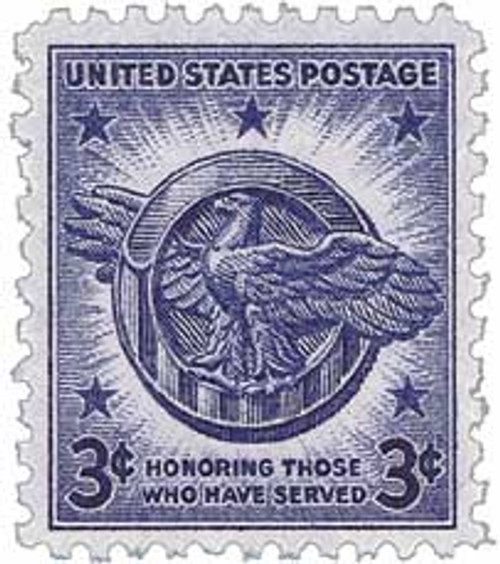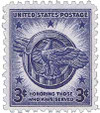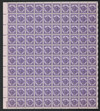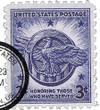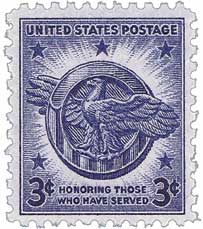
# 940 - 1946 3c US Armed Forces: Veterans of World War II
3¢ Honorable Discharge
City: Washington, D.C.
Quantity: 260,339,100
Printed by: Bureau of Engraving and Printing
Printing Method: Rotary Press
Perforations: 11 x 10 1/2
Color: Dark violet
Honorable Discharge
Some of the earliest plans for a multi-service honorable discharge patch originated in 1919 following World War I. The purpose was to allow honorably discharged individuals to wear their uniforms for a period of time after leaving the service if they couldn’t afford civilian clothes.
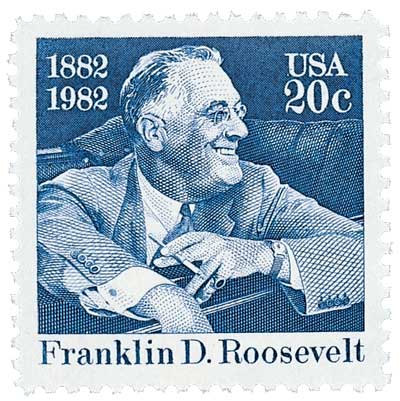
The original design was similar to the eagle on the Presidential Seal but was changed in 1943 by Franklin Roosevelt and Winston Churchill. Their new design pictured an eagle preparing for flight, called “The Eagle Has Flown.” This was meant to coincide with the first major Allied offensives against the Axis Powers in the Pacific and Atlantic. The Army and Navy officially adopted the honorable discharge emblem on November 29, 1944, with the issuance of War Department Circular #454.
The emblem is also known by another name – “ruptured duck.” This name is credited to actress Hedy Lamarr, wife of Friedrich Mandl, the owner of several German arms factories. According to legend, Lamarr created countless revolutionary ideas that improved weapon design and production, which made her husband jealous. Fearing for her life, Lamarr fled to America where she described her escape as a hazardous flight on a “segeltuch gebrochen” or broken bird. The more literal translation of the phrase is “ruptured duck.”
3¢ Honorable Discharge
City: Washington, D.C.
Quantity: 260,339,100
Printed by: Bureau of Engraving and Printing
Printing Method: Rotary Press
Perforations: 11 x 10 1/2
Color: Dark violet
Honorable Discharge
Some of the earliest plans for a multi-service honorable discharge patch originated in 1919 following World War I. The purpose was to allow honorably discharged individuals to wear their uniforms for a period of time after leaving the service if they couldn’t afford civilian clothes.

The original design was similar to the eagle on the Presidential Seal but was changed in 1943 by Franklin Roosevelt and Winston Churchill. Their new design pictured an eagle preparing for flight, called “The Eagle Has Flown.” This was meant to coincide with the first major Allied offensives against the Axis Powers in the Pacific and Atlantic. The Army and Navy officially adopted the honorable discharge emblem on November 29, 1944, with the issuance of War Department Circular #454.
The emblem is also known by another name – “ruptured duck.” This name is credited to actress Hedy Lamarr, wife of Friedrich Mandl, the owner of several German arms factories. According to legend, Lamarr created countless revolutionary ideas that improved weapon design and production, which made her husband jealous. Fearing for her life, Lamarr fled to America where she described her escape as a hazardous flight on a “segeltuch gebrochen” or broken bird. The more literal translation of the phrase is “ruptured duck.”

